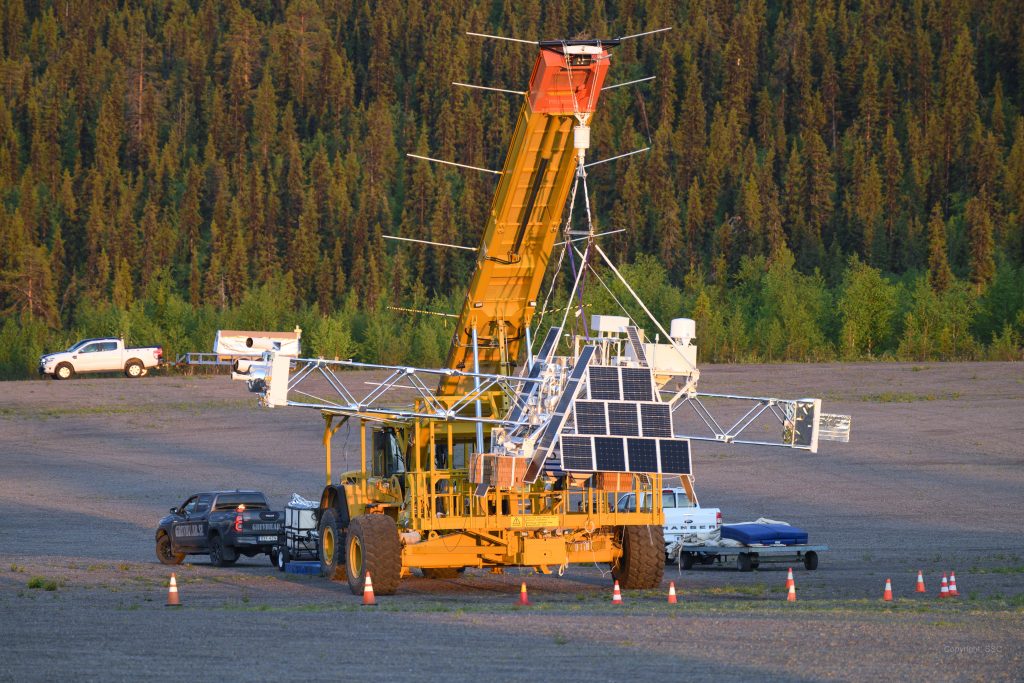Balloon mission measures X-rays en route from Arctic Sweden to northern Canada

A balloon mission is currently journeying from Arctic Sweden to northern Canada, measuring X-rays to deepen our understanding of the behavior of black holes and stars.
The XL-Calibur balloon mission launched from Sweden’s Esrange Space Centre near the Arctic city of Kiruna on Monday:
2024 Sweden scientific balloon campaign update!
The XL-Calibur balloon mission launched from Esrange Space Center in Kiruna, Sweden, on Monday, July 8 at 11:04 p.m. EDT.
XL-Calibur has reached a float altitude of 129k feet & can be tracked here: https://t.co/MehDkz9t86 pic.twitter.com/4hO0mNM1CD
— NASA Wallops (@NASAWallops) July 9, 2024
Andrew Hamilton, program manager for the NASA Balloon Program, said the Esrange Space Centre’s remote northern location is optimal for safety and environmental reasons, in addition to having an ideal strategic position that captures Atlantic winds, facilitating Arctic balloon travel.
“Flying out of Kiruna allows to have a nice path to go all the way across Greenland or Iceland and be able to land in Canada, so that’s why Sweden for this time of year is perfect,” Hamilton told Eye on the Arctic.
The mission, a collaboration between scientists from the United States, Japan and Sweden, is part of an ongoing program that sees balloons launched from different parts of the globe to measure X-ray polarization.
X-ray polarization refers to the waves emitted by black holes and neutron stars, the bodies left after stars explode. The data gathered by the balloon will measure these waves giving scientists a better understanding of the size, structure and behavior of these space objects.
How seemingly low-tech balloons enable high-precision data collection
Researchers say balloons are a vital platform for this kind of data collection.
On the ground, Earth’s atmosphere absorbs most of the X-rays, preventing their detection.
But in the stratosphere where XL-Calibur flies at approximately 40 km above the ground, there is little air, providing scientists with a clear, unobstructed window to measure the X-rays emitted by stars and galaxies.

Hamilton said balloons are the preferred choice for this kind of data collection given that ground telescopes are hindered by atmospheric interference, airplanes have limited airborne durations despite their altitude, and satellites are costly to launch and maintain.
“The balloon program fits that middle ground where it’s not terribly expensive, but you get a lot of science for a long period of time,” he said. “We can can fly for hours, days, weeks or months, depending on where [we are].”
Recovery team waiting in Yellowknife
Although data from the balloon flight is uploaded over satellite link, Hamilton said it’s still critical to retrieve the balloon’s payload once it has landed.
“These instruments can generate way more data than can be sent over satellite link, so some of it will be stored on board and it’s important for us to get there and try and retrieve it,” he said.

Once the team identifies what they believe to be a suitable retrieval site in northern Canada, the balloon is brought down. However, pinpointing the exact landing spot remains challenging due to unpredictable weather and atmospheric wind conditions at high altitudes.
“Our team is set up in Yellowknife, [Northwest Territories] and are waiting for the payload to come down,” Hamilton said. “Once they know where it’s at, they’ll start working with the local support to get out there and help with the recovery process.”
At the time of writing on Thursday, the balloon was making its way over Greenland.
The flight was expected to last four or five days from launch.
You can follow the balloon’s journey at this NASA link.
Comments, tips or story ideas? Contact Eilís at eilis.quinn(at)cbc.ca
Related stories from around the North:
Canada: Meteors, UFOs, space junk? Dawson City residents puzzled by sky sightings, CBC News
Finland: Report recommends creation of Finnish space situational awareness centre, Eye on the Arctic
Sweden: Arctic Sweden—Kiruna pivots from underground to outer space, Blog by Mia Bennett
United States: How Alaska’s little-known spaceport revolutionized military conflict, Blog by Mia Bennett



